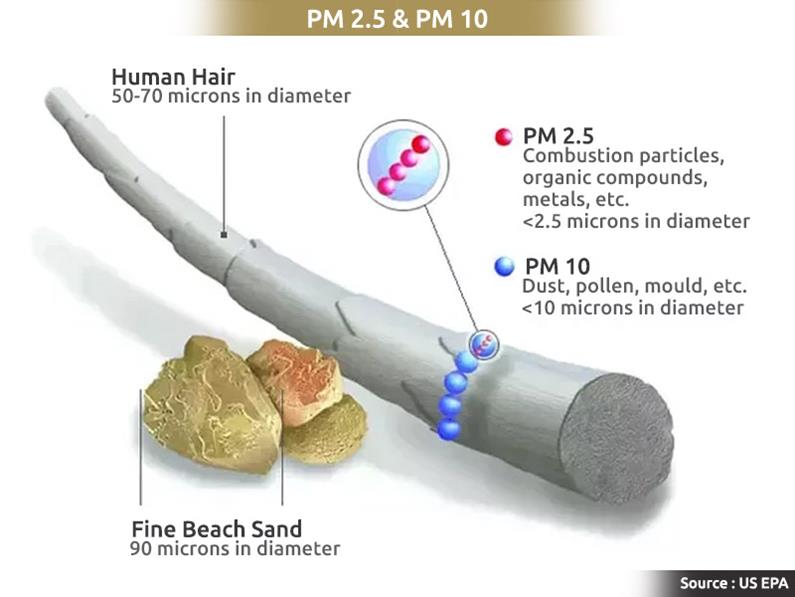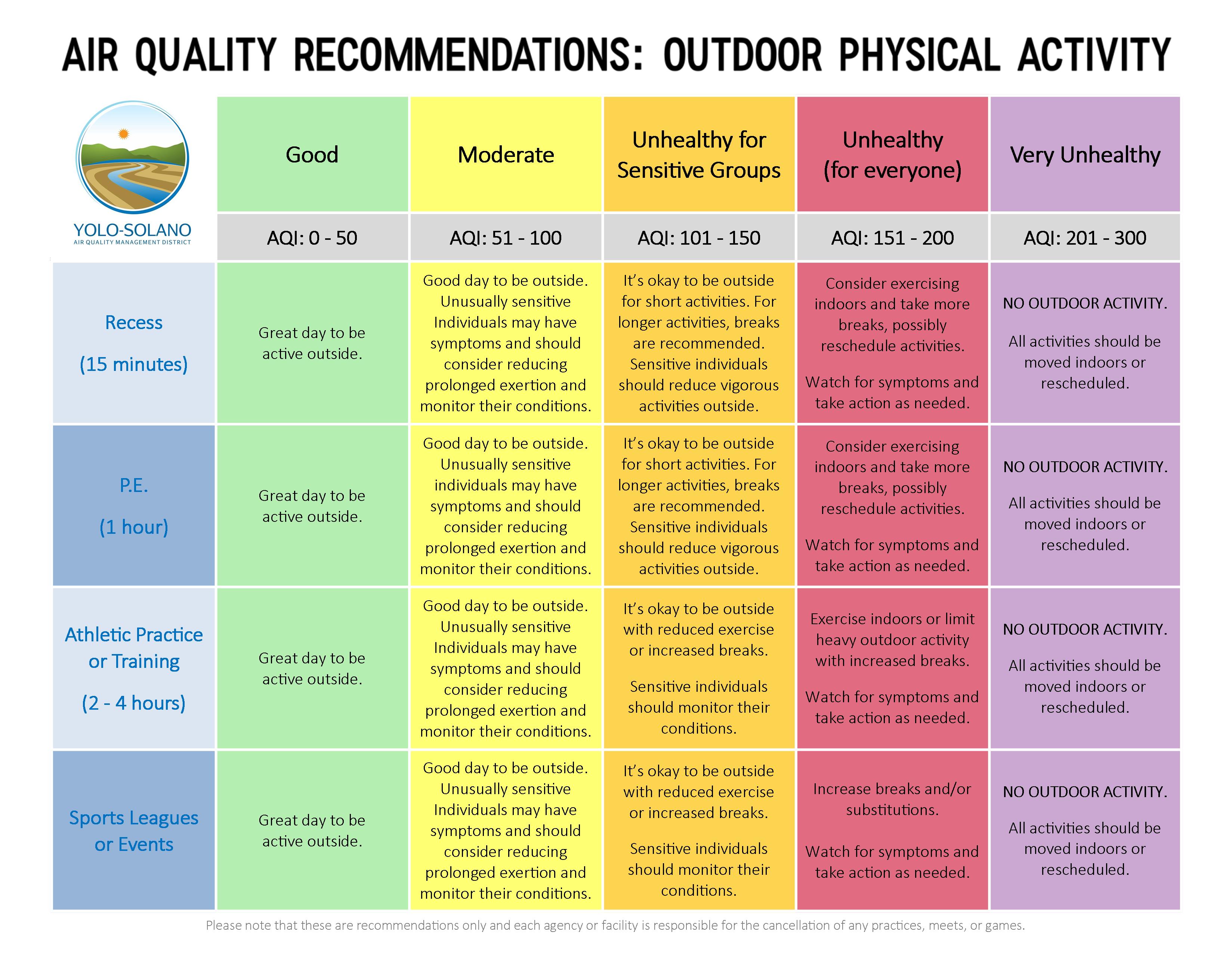As wildfires become a repeating occurrence in California, knowledge about air pollution and its health impacts has become an integral part in being well-informed during these disasters.
What is in Wildfire Smoke?
When wood and other organic materials are burned, a complex mixture of gases and fine particles are released, such as:
| Carbon Monoxide | Carbon Dioxide | Nitrogen Oxide | Trace Minerals |
| Particulate Matter | Hydrocarbons | Formaldehyde | Other Organic Chemicals |
It’s important to note that the composition of smoke depends on multiple things, such as how efficiently fuel burns, the fuel type and its moisture content, if other materials are being burned, the fire’s temperature, wind conditions, and other weather-related variables.
The main pollutant of concern in wildfire smoke is particulate matter, due to its health impacts from short-term exposure. This pollutant is a mixture of both solid particles and liquid droplets. Particulates can vary in size but those that are ultra-fine, or 2.5 micrometers in diameter (PM2.5) or 1/30 the width of a human hair, can be easily inhaled and penetrate the body’s natural defenses and travel deep into the lungs to represent a greater health concern.
Another pollutant of concern is carbon monoxide, which is a colorless, odorless gas that is produced by the incomplete combustion of wood or other organic materials. Carbon monoxide levels are at its highest during the smoldering stages of a fire, especially if you are near or close to the fire.
Health Impacts
Smoke can affect anyone, regardless of age, fitness level or health and those most susceptible in its health impacts include older adults, young children, women who are pregnant, and people with heart or lung disease and asthma.
The health impacts of smoke can vary depending on each person’s sensitivity level, the duration of outdoor (physical) activity, as well as how long a community or region is impacted by the smoke.
For more information on the health effects of wildfire smoke, click below.
Wildfire Smoke Information >>>
Young Children
For young children, even at rest, they are breathing at a faster rate than adults due to their smaller lung capacity. Children 0 – 1 years old can take 30 to 60 breaths per minute, while children 1 – 5 years old can take 22 to 40 breaths per minute.1
Young children are also considered a sensitive group because their lungs are still developing, making them more susceptible to air pollution than healthy adults. Even children who do not have asthma or a respiratory illness can experience symptoms during wildfire smoke, such as wheezing, difficulty breathing, and chest tightness.
Additionally, children tend to be more physically engaged during activity, spend more time outdoors, and inhale more air (and therefore more smoke pollutants) per pound of body weight than adults.

Other Sensitive Groups
Pregnant women and their growing babies are also at an increased risk of adverse health effects from wildfire smoke, especially during the critical time of the baby’s development.
Older adults are another sensitive group because of the higher prevalence of pre-existing lung and heart diseases and their physiologic processes, including defense mechanisms, which have declined with age.
Those with chronic lung disease, such as asthma or COPD, which consists of more than 35 million people in the U.S., including 6 million children, are another sensitive group.2 These individuals may experience more inflamed airways, airway constriction, or shortness of breath during wildfires due to the number of pollutants in the air.

Outdoor Physical Activity
For adults who exercise or do physical activity, the body is inhaling more oxygen or air to provide energy, and at the same time, expelling the carbon dioxide that is created from this production of energy. This means that a person can breathe 2 to 4 times faster during physical activity than during rest and that the lungs are bringing more outside air into the body. Most adults take 12 to 20 breaths a minute while at rest.3 During physical activity, this rate can increase to 40 to 60 breaths a minute.
Many people don’t realize that if you smell smoke, you’re breathing it. This means that during a wildfire incident where smoke is traveling through or staying stagnant for multiple days, people are breathing in air that contains pollutants and they are exercising or outdoors, may be more exposed to its health impacts.
Though regular physical activity each day helps to promote health and fitness, during a wildfire physical activity can lead to health impacts and should be modified. The table below shows the District’s recommendations for outdoor physical activity based on the Air Quality Index (AQI).
Please note that each agency, business, sports league or facility is responsible for the cancellation or postponement of any games, practices, or meets. The Air District has no jurisdiction over this process and can only provide air quality recommendations and information.
Please click here for a PDF of the table.
1: https://www.aclsmedicaltraining.com/normal-values-in-children/
2: https://www.lung.org/lung-health-and-diseases/lung-disease-lookup/asthma/learn-about-asthma/asthma-children-facts-sheet.html
3: https://www.google.com/url?sa=t&rct=j&q=&esrc=s&source=web&cd=13&ved=2ahUKEwiEx-eTpdTeAhUTHnwKHc61CjkQFjAMegQIChAB&url=https%3A%2F%2Fmy.clevelandclinic.org%2Fhealth%2Farticles%2F10881-vital-signs&usg=AOvVaw1nnx8ortWDJu2f9TmEPH3r



